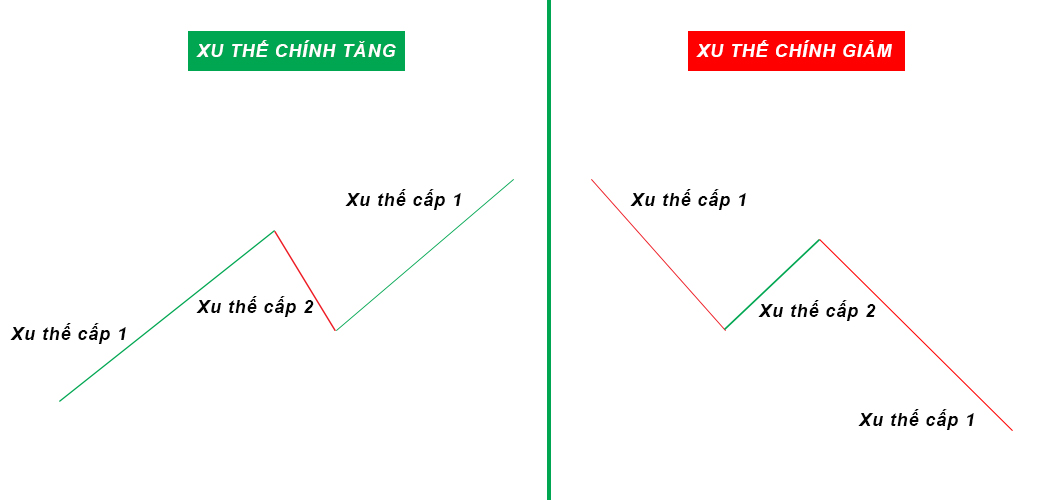Dow Theory is the foundation of technical analysis, very popular use in the stock market, forex market or coin money. Anyone who is just beginning to learn technical analysis must study and master the Dow theory.

What is the Dow theory?
The Dow theory is the oldest and also the most commonly used method to support the identification of major trends in the market. The purpose of the Dow theory is to identify changes in the main movement or the fundamental movement of the market to establish the main trend of the market. Once a trend has been established, the trend is assumed to continue to exist until a trend reversal occurs.
Development history of Dow theory
The Dow Theory is the result of a series of articles published by Charles Dow from 1900 to 1902 in The Wall Street Journal. Dow theory is considered to be the origin of all schools of technical analysis. Interestingly, the Dow theory was built with the original purpose of using stock market trends as a barometer of business conditions, not for stock price forecasting. But later on, the Dow theory was primarily dedicated to supporting stock price forecasts.
The person who developed Dow's principles and organized them into Dow's theory almost today is Halminton through "The Stock Market Barometer" in 1922. And by 1932, Robert Rhea had perfected these theories. and publish "Dow Theory”, This is the Dow theory we use today.
6 principles of the Dow theory
1. Price reflects all market action
Price reflects a comprehensive view of all the factors that are relevant to it: new information, market share, the psychology of current and potential investors in the market. More specifically, all asset-related factors will influence the supply and demand of that asset, and thus quickly reflect on the price.
2. The market has 3 types of trends
Dow said that the market will have a main trend, a secondary trend and a short-term trend.
- Main trend (tier 1 trend) could be an uptrend (Bullish) or a downtrend (Bearish). Once the major trend is established, it will exist until there is a sign of a reversal. Dow theory helps investors identify the main trends and make appropriate investment decisions. For a professional trader, the principle must always trade in the level 1 trend, which is the main trend.
- Secondary trend (secondary trend) Contrary to the main trend, it interrupts the main trend, usually reaching 1/3, 2/3, or more often than 1/2 of the previous moving trend.
- The short-term trend is not important (ripples).

3. The main trend has 3 stages
The accumulation phase - the smartest investors start selling or buying when they feel the current market trend changes.
Participation stage - most traders use technical analysis to enter the market after the price changes rapidly.
The implementation phase - a new direction that is widely accepted and the confirmation lies in economic news, leading to the growth of speculative volume and the general participation in the trend.
4. Market indicators must identify each other
Dow uses the Dow Jones industry index and the Transportation Averages to measure the health of the economy. Only when both indices increase, the trend of the market will be real.
5. Trading volume determines the trend
In an uptrend, the trading volume will increase when the price increases (following the trend) and vice versa, the decreasing volume shows that the increasing trend is showing signs of weakening.
6. The trend will maintain when a clear reversal occurs
The reversal of a primary trend is easy to confuse with a rally of a secondary trend, so wait for the main trend to clearly reverse to identify the correct trend of the market.
Some transactional examples:



0 Comments